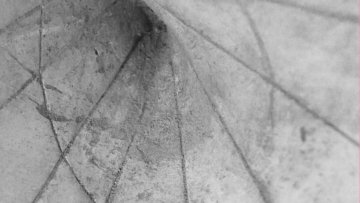The tangential touch problem for fully nonlinear elliptic operators
Abstract
A minimalistic p-adic Artin-Schreier (Joint Number Theroy/Logic Seminar)
Abstract
In contrast to the Artin-Schreier Theorem, its $p$-adic analog(s) involve infinite Galois theory, e.g., the absolute Galois group of $p$-adic fields. We plan to give a characterization of $p$-adic $p$-Henselian valuations in an essentially finite way. This relates to the $Z/p$ metabelian form of the birational $p$-adic Grothendieck section conjecture.
Most old-established mathematics departments around the world have somewhere, gathering dust in a corner cabinet, a collection of plaster models of surfaces. In the 1880s these were a must-have item for geometrically minded mathematicians and James Joseph Sylvester, the Savilian Professor of Geometry in Oxford, accordingly acquired a set from Germany. They were not cheap, and in October 1886 Sylvester had to cancel a series of lectures because a cash-strapped university hadn’t agreed his equipment grant.
14:15
Representation theory related to some infinite permutation groups.
Abstract
Our work (which is joint with Simon Smith) began as a study of the structure of infinite permutation groups $G$ in which point stabilisers are finite and all infinite normal subgroups are transitive. That led to two variations.
One is the generalisation in which point stabilisers are merely assumed to satisfy min-{\sc N}, the minimal condition on normal subgroups. The groups $G$ are then of two kinds. Either they have a maximal finite normal subgroup, modulo which they have either one or two minimal non-trivial normal subgroups, or they have a regular normal subgroup $M$ which is a divisible abelian $p$-group of finite rank. In the latter case the point stabilisers are finite and act irreducibly on the socle of~$M$. This leads to our second variation, which is a study of the finite linear groups that can arise.
Some infinite permutation groups
Abstract
Our work (which is joint with Simon Smith) began as a study of the structure of infinite permutation groups $G$ in which point stabilisers are finite and all infinite normal subgroups are transitive. That led to two variations. One is the generalisation in which point stabilisers are merely assumed to satisfy min-{\sc N}, the minimal condition on normal subgroups. The groups $G$ are then of two kinds. Either they have a maximal finite normal subgroup, modulo which they have either one or two minimal non-trivial normal subgroups, or they have a regular normal subgroup $M$ which is a divisible abelian $p$-group of finite rank. In the latter case the point stabilisers are finite and act irreducibly on the socle of~$M$. This leads to our second variation, which is a study of the finite linear groups that can arise.
15:45
Fixed Point Properties and Proper Actions on Non-positively Curved Spaces and on Banach Spaces
Abstract
One way of understanding groups is by investigating their actions on special spaces, such as Hilbert and Banach spaces, non-positively curved spaces etc. Classical properties like Kazhdan property (T) and the Haagerup property are formulated in terms of such actions and turn out to be relevant in a wide range of areas, from the conjectures of Baum-Connes and Novikov to constructions of expanders. In this talk I shall overview various generalisations of property (T) and Haagerup to Banach spaces, especially in connection with classes of groups acting on non-positively curved spaces.
15:45
Bounded cohomology and lattices in product of trees
Abstract
We will discuss the concept of $\ell^2$-stability of a group and show some of its rigidity consequences. We provide moreover some very concrete examples of lattices in product of trees that have many interesting properties, $\ell^2$-stability being only one of them.


